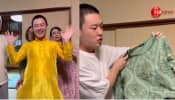London: Tanning is traditionally believed to protect against skin cancer, but a new study conducted by GW researchers has broken this misconception.
There is no such thing as a safe tan, according to GW School of Medicine and Health Sciences (SMHS) researchers Edward C. De Fabo, Ph.D., Frances P. Noonan, Ph.D., and Anastas Popratiloff, M.D., Ph.D.
“This is the first time that UV-induced melanin formation (tanning), traditionally thought to protect against skin cancer, is shown to be directly involved in melanoma formation in mammals,” said De Fabo, who is professor emeritus at SMHS.
“Skin melanoma is the most lethal of the skin cancers. Our study shows that we were able to discover this new role for melanin by cleanly separating UVA from UVB and exposing our experimental melanoma animal model with these separated wavebands using our unique UV light system designed and set up at GW. Dermatologists have been warning for years there is no such thing as a safe tan and this new data appears to confirm this,” he added.
Their research uses a mammalian model to investigate melanoma formed in response to precise spectrally defined ultraviolet wavelengths and biologically relevant doses. They show that melanoma induction by ultraviolet A (320–400 nm) requires the presence of melanin pigment and is associated with oxidative DNA damage within melanocytes.
In contrast, ultraviolet B radiation (280–320 nm) initiates melanoma in a pigment-independent manner associated with direct ultraviolet B DNA damage. The researchers identified two ultraviolet wavelength-dependent pathways for the induction of CMM and the study describes an unexpected and significant role for melanin within the melanocyte in melanoma genesis.
“Also new is our discovery that UV induction of melanin, as a melanoma-causing agent, works when skin is exposed only to UVA and not UVB radiation. This is especially important since melanoma formation has been correlated with sunbed use as many epidemiological studies have shown. One possible reason for this is that tanning lamps are capable of emitting UVA radiation up to 12 times, or higher, the UVA intensity of sunlight at high noon. Melanin plus UVA is known to cause photo-oxidation, a suspected, but still to be proved, mechanism for the formation of melanoma as we describe in our study,” De Fabo said.
This grant was supported in part by grants from the National Cancer Institute (NCI) and the Melanoma Research Foundation. The melanoma mouse was developed in collaboration with G. Merlino, Ph.D, of NCI.
The study has been published in the journal Nature Communications.
ANI
















